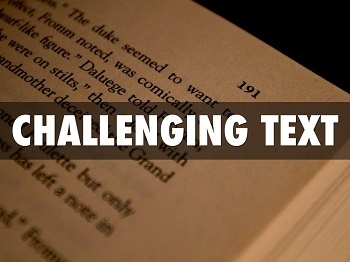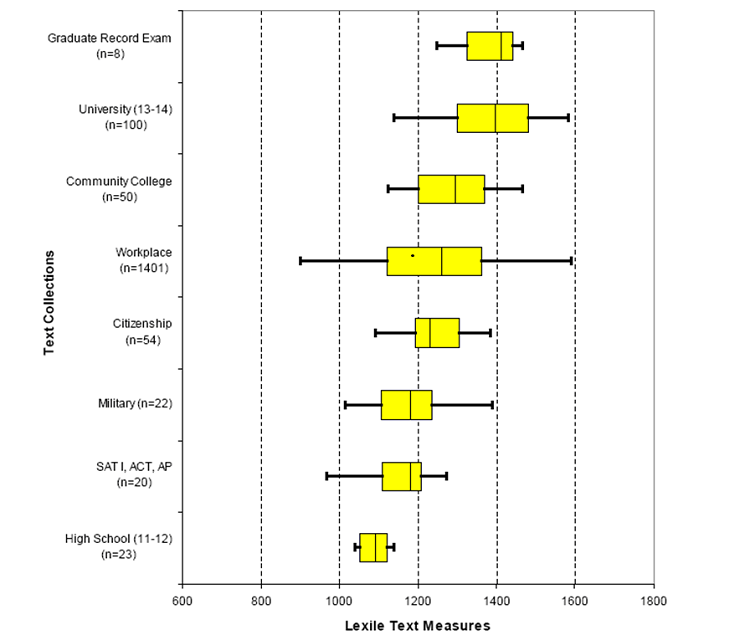Why Students Need to Read Challenging Text

Why do literacy standards focus so much on making sure students learn to read complex text? Common Core Appendix A: Research Supporting Key Elements of the Standards (2010, p. 2-4) provides some insight, summarized below.
- The demands and complexity of reading in a college setting, in workforce training programs, and in civic life in general have either remained the same or increased over the last fifty years. However, K-12 texts have actually declined in difficulty and sophistication and become less demanding.
- Previous standards, curricula, and instructional practices have been insufficient to successfully foster the skills required to read complex texts independently, particularly informational text. K-12 students are, in general, provided with considerable scaffolding for reading that is already less complex overall than that typically required of students prior to 1962.
- Students today are asked to read very little expository text. For example, as little as 7% of elementary school instructional reading and 15% of middle school instructional reading is expository — even in light of two concerning facts: 1) students require sustained exposure to expository text to develop important reading strategies, and 2) expository text makes up the vast majority of the required reading in both post-secondary education and the workplace.
- What little expository reading students are asked to do is too often superficial and perfunctory – the sort that involves skimming and scanning for particular, discrete pieces of information. Such reading is unlikely to prepare students for the cognitive demand entailed by true understanding of complex text.
- If students cannot read challenging text with understanding, they will read less in general. If students cannot read complex expository text to gain information, they will likely turn to text-free or text-light sources, such as video and podcasts that cannot capture the nuance, subtlety, depth, or breadth of ideas developed through complex text.
Relying on the adage “a picture is worth a thousand words” I often show the figure below to teachers because it illustrates the disparity between the complexity of text that grade 11 and 12 students are asked to read and the text they will encounter in college, career, and adulthood (Williamson, G.L., 2004).
The rectangles represent the central majority of reading encountered in each setting or task – in other words, the text that falls between the 25th and 75th percentiles of its Lexile text measure, which indicates its difficulty or “readability.” The chart clearly illustrates that students leave high school without much exposure to the levels of complex text they will encounter after that, regardless of academic or professional path.
Given the challenges our students will face when they graduate high school, I can’t argue with the Common Core’s emphasis on students learning the skills to closely read more challenging text. However, I am concerned that teachers will start using complex text without knowing how to teach the skills required to do so. The key is to provide quality professional development, especially to content area teachers, about how to embed reading instruction into content classroom instruction.


 Joan Sedita is the founder of Keys to Literacy and author of the Keys to Literacy professional development programs. She is an experienced educator, nationally recognized speaker and teacher trainer. She has worked for over 35 years in the literacy education field and has presented to thousands of teachers and related professionals at schools, colleges, clinics, and professional conferences.
Joan Sedita is the founder of Keys to Literacy and author of the Keys to Literacy professional development programs. She is an experienced educator, nationally recognized speaker and teacher trainer. She has worked for over 35 years in the literacy education field and has presented to thousands of teachers and related professionals at schools, colleges, clinics, and professional conferences.
Leave a Reply